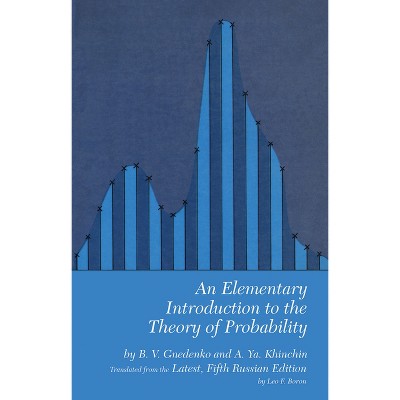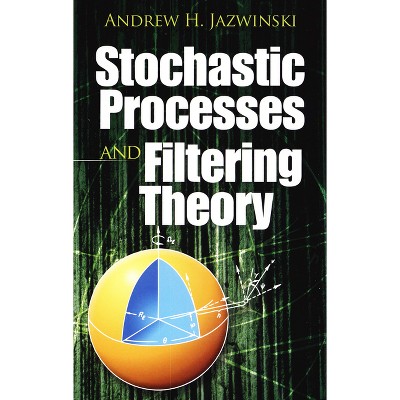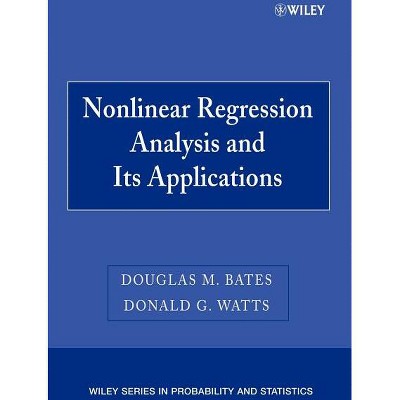Sponsored

An Introduction to the Theory of Point Processes - (Probability and Its Applications) 2nd Edition by D J Daley & David Vere-Jones (Hardcover)
In Stock
Sponsored
About this item
Highlights
- Point processes and random measures find wide applicability in telecommunications, earthquakes, image analysis, spatial point patterns, and stereology, to name but a few areas.
- Author(s): D J Daley & David Vere-Jones
- 573 Pages
- Mathematics, Probability & Statistics
- Series Name: Probability and Its Applications
Description
About the Book
Fully revised and updated by the authors who have reworked their 1988 first edition, this brilliant book brings together the basic theory of random measures and point processes in a unified setting and continues with the more theoretical topics of the first edition.
Book Synopsis
Point processes and random measures find wide applicability in telecommunications, earthquakes, image analysis, spatial point patterns, and stereology, to name but a few areas. The authors have significantly reshaped their first edition of 1988 and now present Introduction to the Theory of Point Processes in two volumes sub-titled "Elementary Theory and Models" and "General Theory and Structure". Volume One contains introductory chapters and offers new material on marked point processes and processes evolving in time, where the conditional intensity methodology provides a basis for model building, inference, and prediction. Volume Two returns to the general theory, with additional material on marked and spatial processes. The necessary mathematical background is reviewed in appendices located in Volume One.
From the Back Cover
Point processes and random measures find wide applicability in telecommunications, earthquakes, image analysis, spatial point patterns and stereology, to name but a few areas. The authors have made a major reshaping of their work in their first edition of 1988 and now present An Introduction to the Theory of Point Processes in two volumes with subtitles Volume I: Elementary Theory and Methods and Volume II: General Theory and Structure.
Volume I contains the introductory chapters from the first edition together with an account of basic models, second order theory, and an informal account of prediction, with the aim of making the material accessible to readers primarily interested in models and applications. It also has three appendices that review the mathematical background needed mainly in Volume II.
Volume II sets out the basic theory of random measures and point processes in a unified setting and continues with the more theoretical topics of the first edition: limit theorems, ergodic theory, Palm theory, and evolutionary behaviour via martingales and conditional intensity. The very substantial new material in this second volume includes expanded discussions of marked point processes, convergence to equilibrium, and the structure of spatial point processes.
D.J. Daley is recently retired from the Centre for Mathematics and Applications at the Australian National University, with research publications in a diverse range of applied probability models and their analysis; he is coauthor with Joe Gani of an introductory text on epidemic modelling. The Statistical Society of Australia awarded him their Pitman Medal for 2006.
D. Vere-Jones is an Emeritus Professor at Victoria University of Wellington, widely known for his contributions to Markov chains, point processes, applications in seismology, and statistical education. He is a fellow and Gold Medallist of the Royal Society of New Zealand, and a director of the consulting group Statistical Research Associates.
Review Quotes
From the reviews of the second edition:
"This book is the second Volume of the original single Volume from 1988, the first volume having appeared in 2003.... It contains several topics that have been studied since 1988, a list of references that is greatly enlarged and improved.... In all, the second volume...serves as an excellent and unique standard reference to the theory of point processes and may not be missed by anyone dealing in a serious way with point processes." (A. Stein, Kwantitatieve Methoden, Issue R12, 2008)
"Although the first and second volumes are not physically bound, they are clearly intimately linked.... A welcome new chapter in this second edition provides a brief introduction to spatial point processes surveying both descriptive methods for point patterns and point process models.... Challenging exercises at the end of each chapter both illuminate and expand on the text. The writing flows, yet is always meticulous, all notation is well defined, and a clear love for the subject is transparent throughout. The two volumes together are a major achievement by the authors and deserve to become a main reference in the area of point processes." (Michael Sherman, Journal of the American Statistical Association, March 2009, Vol. 104, No. 485)
"The second volume focuses on the structure and general theory of point processes ... . each topic is carefully motivated and an extensive literature review is provided. ... Volume II will be of particular use to the specialist with a good background in probability, measure theory, and topology. ... belong on the shelf of any modern probability theorist." (Gail Ivanoff, Mathematical Reviews, Issue 2009 b)
Shipping details
Return details
Frequently bought together

Trending Non-Fiction
















